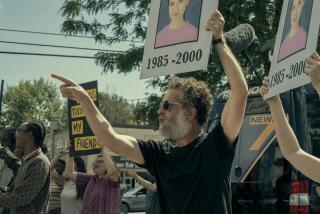Morphine Can Kill Only Part of the Pain : Death: We focus on physical pain, but emotional pain usually is more difficult to treat.
- Share via
The fatal shooting of Steven Charles Jenkins, a terminally ill AIDS patient, by his friend Philip Lee Saylor on Jan. 2 at Cedars-Sinai Medical Center has again focused attention on the problems of death and dying in our society.
The attending physician in the case, Dr. Phillip C. Zakowski, expressed his regrets about the apparent mercy killing, saying that although he understood the emotional difficulties of the situation, “allowing us to use morphine (anesthesia) would have been a much more humane way . . . . That is a very comfortable, painless way to let nature take its course.”
Unfortunately, there is no painless way to die. By focusing on the physical pain, we lose sight of the emotional pain facing patients and their families. The latter is usually more difficult to “treat.” The dying patient must struggle with loss of physical function, increasing dependence on others, constant threats to dignity brought about by the illness and the growing awareness that he or she will be separated from loved ones. Loved ones suffer as they watch the patient endure this.
They grieve for his or her losses as well as their own. In addition, they must deal with their guilt over past conflicts with the patient, feelings of inadequacy from their inability to help and questions of their own mortality.
Obviously, intravenous morphine will provide little relief for these things.
Yet there is much that can be done, starting with communication. Patients must try to express their wants, needs and fears. Physicians must facilitate this by being willing to listen to patients. They also must explore these issues directly.
Family members must be involved from the start to help provide support for the patient and to deal with their own emotional needs. Through this, realistic goals can be established and a treatment plan formulated according to the patient’s wishes. Through communication, understanding and support, desperate acts by patients and family members can be avoided.
Finally, we must all acknowledge that in many situations, a “painless” death is a myth. There are times when physical and emotional pain persist, despite all efforts. Some patients say that the only time they are without pain is when they are receiving so much medication that they are unconscious. Others, although not in pain, are so debilitated by their condition that they find that the burdens of life surpass any joy that they might feel.
Whether this constitutes an acceptable existence is something that only the patient can decide. We must not delude ourselves into believing that we can eliminate this type of suffering.
We must acknowledge our limitations so that our society can move forward and explore more humane options for dealing with the terminally ill, such as euthanasia. Unless we provide patients and their families with some way of relieving their anguish, they will continue to use whatever means they feel are available to them.




